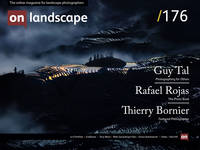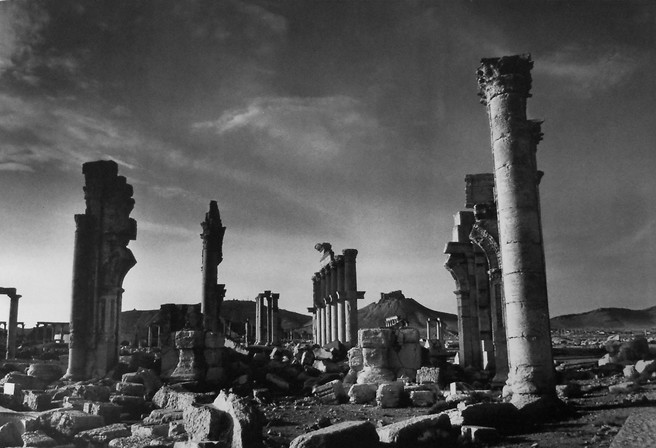Terry Ward chooses one of his favourite images

Terry Ward
Terry Ward took his first picture in 1977. Covering a wide range of topics over the years from landscapes in the Peak District to street photography in Cornwall and London.
He likes to work in project form taking a subject and focusing on
a particular important aspect. His solo work Mill Roads Finest Hour,
Vista and Fenlands have all been exhibited and he has contributed to
group shows.
He is a published author and photobook creator. With Vista
being his first. He also publishes historical and cultural publications.
He is active on social media and has conducted many lectures about
photography and history in the south east of England over the past
few years.
Whilst thinking about the image to discuss, I looked at many traditional landscape shots, pondering on what makes an interesting image to write about. I initially thought about a Jem Southam shot, he was the photographer for me that changed my attitude to not only landscape but all photography. He showed me that by using repetition in my work could add to its power.
After all my deliberations, I decided to try to look at the image that was not just a pretty or thought-provoking thing, but something far more compelling. I looked for an image that could partly communicate sadness, but also be part of a continuing story.
After looking through many images I chose ‘Destruction of the Monumental Arch 2018 by Sir Don MucCullin. The 3rd century arch has been under the control of many great empires, including the Roman, Byzantine and Timurid. Its partial destruction in 2015 by ISIL made headlines around the world. The site is in the middle of the Syrian Desert and is a UNESCO world heritage site.
During Christmas 2018 my daughter brought me a gift, it was The Landscape by Sir Don McCullin, I unwrapped the crisp plastic wrapping and sat down on Christmas morning to look at my new photo book. The publication is the last instalment in a series by don, which documented many years of his work. I also have another in the series called My England, which is a hybrid collection of street and landscape photos and showed off the skill of McCullin’s varied work. He says; I do not take photographs I think, but most importantly he makes the viewer think.
My featured image is influenced by the work of the great Victorian explorer photographers, such as Francis Frith. His picture Koum Ombo Near View is from his book Upper Egypt and Ethiopia published in 1863. The Victorian’s used new technology to document the skill and purpose of past societies, so allowing it to believe that it was a better version of an earlier civilisation. Frith also shot many scenes in England during the nineteenth century.
As mentioned the area has been the centre of destruction by ISIL. But the image asks more questions than it answers. Why did McCullin take this shot? Was it a comment on the abhorrent action? The columns themselves look brittle and weak, but by the look of the debris took an enormous amount of explosives to destroy.
Though shot in the middle-east, the images have ghosts of early pre-Raphaelite photography. They documented ruins in a very similar way to don. Their images were a reflection, in their eyes of a fairer, nobler society before the Industrialisation of Victorian England, which in their opinion had supposedly tainted the land and the soul.
The Syrian picture has so much baggage associated with it, I suspect the frame was an example of religious madness and what it can lead too. Something McCullin came up against time and time again during his work.
It is an image of many sides, not strictly a war or landscape shot, it sits somewhere in the middle, this gives you freedom artistically to question the image. As with many black and white shots, one of the first things you notice are the textures, they seem exaggerated in the desert light.
The scene of destruction could be why Don was drawn to this area, it looks like it has just been bombed, the image documents a crushed and repressed area. The narrative he has used maybe mirrors McCullin’s view on the world at that point. There are still remnants of the arch, lone columns in the foreground and intact columns in the background, suggesting that more of the site survives intact than first thought. The sky has been dodged within the image to make it a lot darker than it originally was, this trick adds to the tension of the piece. The rubble at first glance looks as it should be, but on closer inspection, the columns have appeared to have been cut, which suggests human not natural change. It is not known whether the rubble has been moved to its present site or if it was moved after the attempted destruction.
The picture is almost scorched into the page, but more interestingly, it frees you to look at your own work. Forcing you to ask, why do I take pictures? Where do they fit in my overall vision? And whether the images I take resonate with my target audience? This image in all its beauty and sadness fulfils the mantle of a successful picture, it makes you think………………
Do you have an image you'd like to write an end frame article on? Take a read of our previous end frame articles for inspiration! We are looking for contributions for forthcoming issues. Please get in touch with Charlotte Britton directly.


